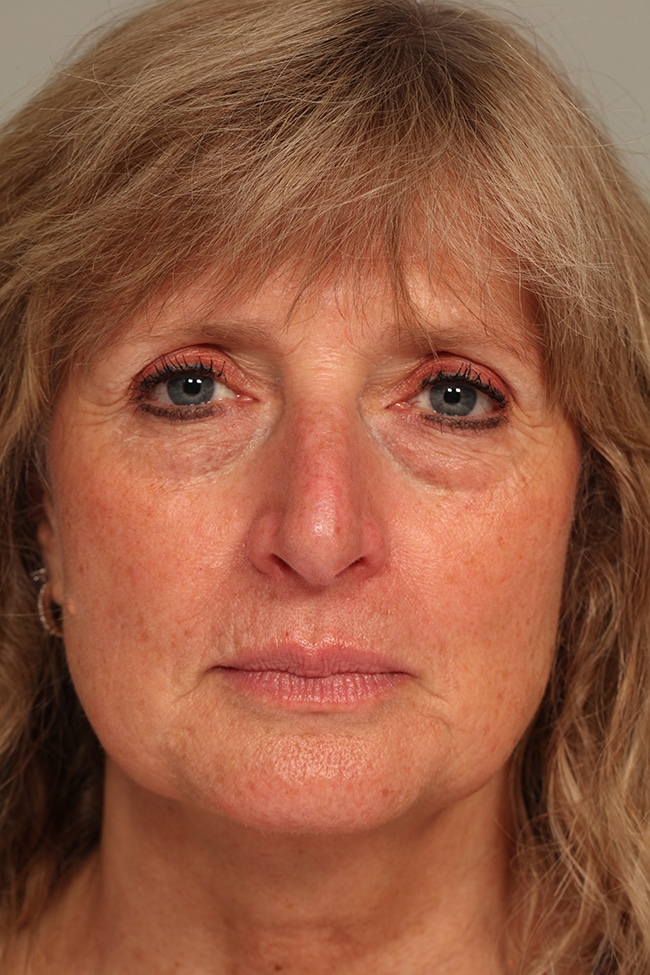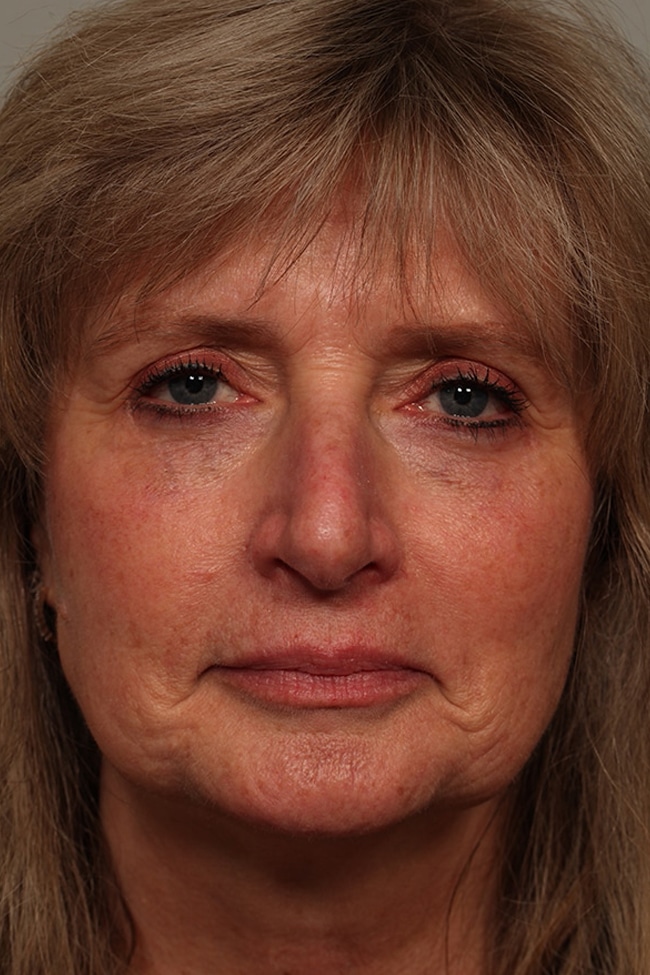What is Fat Transfer (Fat Grafting)?
There has been a small revolution in our thinking about the aging face over the past twenty years. For decades, doctors had focused on the roles that gravity and sun damage play in making people look old, but had largely ignored the loss of youthful fullness that also occurs.
This was probably because the medicine couldn’t offer good solutions to that problem, even though it was obvious that young people have full, softly contoured faces and older people don’t.

Two big advances occurred in the 1990’s:
- Hyaluronic acid fillers emerged as a practical short-term method to restore facial volume
- Dr. Sydney Coleman in New York City pioneered the surgical transfer of body fat to the face as a long-term method to restore volume.
These techniques served as an epiphany for doctors interested in facial rejuvenation. Facial plastic surgeons around the world have gradually developed increasingly comprehensive strategies to help people look as young as they feel. Be sure to give our team a call today at 303-839-1616 to learn more!
What Are the Benefits of a Fat Grafting Procedure?
The advantages of fat grafting include but are not limited to:
- Smoothing fine lines, scars, wrinkles
- Adding volume to areas like the temples, lips and cheeks
- Natural, Long-lasting results
- Little to no scarring
- Improved Self Confidence
What Our Patients Have to Say
"“Dr. Fante and his whole Team are FANTASTIC! Dr. Fante takes time to listen and analyze, he cares about your ultimate result, best of all, he is extremely talented both medically and artistically. He is the best of the best!”"
What Areas Can Be Treated During a Facial Fat Transfer?
During a facial fat transfer procedure, Dr. Fante can treat the following areas:
- Cheeks
- Under-eye regions for dark circles
- Tear Trough
- Upper eyelids
- Eyebrows
- Forehead
- Temples
- Lips
- Chin
- Marionette lines near the mouth
Who is a Good Candidate for Fat Transfer?
Our office uses fat grafting on the face to return volume to laugh lines, smile lines, crow’s feet, under-eye hollows, sunken cheeks, the lips, and to correct acne scarring.
What Areas of the Body is Fat Transferred From for a Fat Grafting Procedure?
Obviously, in order to have this done, you also need to have fat to harvest elsewhere on your body. This is usually taken from the abdomen, upper thighs, or flanks.
However, fat grafting isn’t for everyone. If a patient has too much loose skin, eyelid surgery, forehead lift, or a facelift may be a better procedure. During your consultation, our doctors will examine your unique situation and tell you if they think fat transfer will work well for you.
How Does a Facial Fat Transfer Work?
Fat cells that are taken from the belly, hips, neck, or thighs and grafted into the face continue to live in the new location. Dr. Coleman’s central idea was that the fat cells must be grafted in small bits at multiple levels in the face. This is so that they will each have enough oxygen and nutrition from the facial blood supply to survive.
Since his early work, the techniques of fat micro-grafts have evolved. We now use tiny cannulas to place the fat in precise response to the particular and individual needs of each patient. Once the fat grafts have taken, they become a permanent part of the person’s face for the rest of her/his life.

Fat Grafting Procedure
Facial fat transfer (grafting) is a surgical procedure that involves harvesting fat from an area in the body. These areas include the belly, hips, neck, or thighs. Our office uses specialized and gentle liposuction under local anesthesia or twilight sedation. During the same procedure, our doctors place the fat in the face to improve the appearance of areas of concern.
If necessary, you can repeat the fat transfer procedure to further improve these areas over time. Since most people want to avoid looking “overdone”, our doctors are careful to achieve a natural appearance. Facial fat grafting can be safely performed in an ambulatory surgery center (ASC) or in our office surgery procedure room. This depends on the person’s health and the types of concomitant surgery that are planned.


How Long Does a Fat Transfer Procedure Take?
These procedures usually take between one and three hours from start to finish. This time involves harvesting the fat from the donor area, purifying and isolating the fat cells, and reinjecting the fat into the target areas of the face.
What Should I Expect at My Fat Grafting Consultation?
Our team views every consultation as an opportunity for give-and-take flow of information between you and us. For fat grafting, you’ll begin by describing areas of your face you would like to augment with transferred fat cells. You’ll discuss the results you hope to achieve with your fat transfer and we will listen intently.
Next, we will discuss the areas where our doctors could potentially harvest the fat for transfer. You may have specifics in mind, or you may want us to select donor sites.
Then it’s our turn. We will examine your face, looking at your facial aging and the underlying causes. Fat transfers cannot replace a facelift if you have a good deal of loose, sagging skin. But if your problems are due to volume loss from declining collagen production and natural aging, fat transfers could be a great option, either alone or as part of a comprehensive rejuvenation program that includes lifting and skin treatments.
We’ll also examine the donor area (or areas) that were discussed. It’s important that you have adequate fat in these areas.
Once our team decides you’re a good candidate for a fat transfer, they’ll describe the procedure in detail, including the results you can expect, along with the minimal risks involved. We’ll discuss what you can expect the day of your treatment and the simple recovery afterwards.
Throughout your consultation, you’re encouraged to ask any and all questions. By the end of your session, whether you choose to move forward with the procedure or not, you will be well-versed in the entire fat transfer process.
How Many Fat Grafting Sessions Will I Need?
For many people, one fat grafting session is all that is necessary for successfully returning volume to the desired facial areas. However, others will want a second treatment for even more fullness. We use the latest, best-studied micrografting procedures that gently place tiny amounts of fat in multiple adjacent areas to maximize the likelihood that the individual fat cells will survive and live on happily for years to come. We expect a small percentage of loss right after the procedure and that’s why our doctors judiciously graft slightly more fat into the target areas than is necessary to allow for some loss. Yet we also know that it is technically much easier to add a little more later on if needed than it is to take some out if too much is placed. In addition, our patients generally don’t want to be “overdone” and so we are careful and conservative.
How Long Can I Expect My Results From Facial Fat Transfer to Last?
As mentioned above, not all of the fat transferred by Dr. Fante will successfully take. The fat cells that will die and are absorbed by the body can vary depending upon the patient. One factor that can influence successful transfer is how carefully the patient follows his or her recovery instructions. Smoking is an absolutely bad idea when healing from fat grafting. In general, undisturbed fat cells have a much better chance of acquiring a blood supply and becoming permanent. It may take about six months to know how much fat has been successfully transferred.
At that point, the transferred fat cells are there for the duration. Now they will function just like any other fat cells in your body. These are permanent results.
Can Fat Grafting Be Combined With Other Procedures?

What is the Recovery From a Fat Grafting Procedure?
After the fat transfer surgery, there is always some swelling and bruising the first day. This swelling subsides over 7-10 days. Pain is typically minimal, and patients will quickly resume quiet activities.
Alternatives to Fat Transfer Surgery:
Much like the fat transfer procedure, FDA-approved fillers can contour the face and add volume to rejuvenate the area of concern temporarily. Modern facial fillers, lasting from about six months to two years, can be injected in minutes, and are very popular. The majority of patients are happy with the results.
First-timers also like the idea that the fillers are reversible and can dissolve if they’re not happy. The possibility of bruising and the fact that the fillers are temporary are the primary downsides. Instead, the transfer of body fat to the face is more permanent.
Are Fat Grafting Procedures Covered by Insurance?
These are deemed to be elective cosmetic procedures by insurance companies, so they are usually not covered. Rarely, insurance may cover fat grafting as part of the reconstruction after major trauma or cancer surgery.
Are There Risks to Facial Fat Grafting?
The facial fat transfer procedure is generally considered safe but, like any surgery, it has its risks. Risks are rare but include:
- Bleeding
- Infection
- Nerve Damage
- Under- or Over-Correction
- Scarring
If any of these risks occur, contact Dr. Fante as soon as possible.
Schedule a Consultation
Contact us today for a consultation with our doctors, Dr. Fante and Dr. Levitt, to learn more about this revolutionary approach to facial aging. Call 303-839-1616 now! Our practice serves Denver, CO and surrounding areas.


